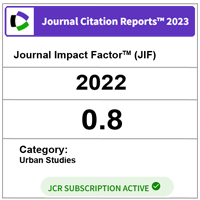THE PROPENSITY OF BUILDING INFORMATION MODELLING AND INTEGRATED PROJECT DELIVERY IN BUILDING CONSTRUCTION PROJECT
DOI:
https://doi.org/10.11113/ijbes.v6.n1-2.386Keywords:
Building Information Modelling, BIM, Integrated Project Delivery, IPDAbstract
The Building Information Modelling (BIM) implementation is to create a centralised knowledge sharing resource that contains all the necessary design and operational information about the project. BIM is a collaborative approach and integrated project delivery to design and delivery embraced by various construction teams in the construction projects. In the context of the most suitable project delivery to be used, with regards to the use of BIM, the Integrated Project Delivery (IPD) approach is highlighted as the best method which correlates building procurement of the design-to-construction business process through literature review analysis. IPD is developed as project delivery system that integrates people in effective collaborative approach between the key players in the project. IPD is going to be particularly beneficial for BIM because the contracts relation between the contractor, designers, consultants, constructors, sub-contractors and suppliers were binded and expressly determined at earlier stage. This relationship between these two subjects will helped the project team to achieve the project goals in terms of timely schedule, life cycle costs, quality and sustainability in construction project. Therefore, this study investigates on the propensity of the best methodology of project delivery system which can correlate with procurement adoption for projects adapt BIM concept. This is a descriptive study and the method used is based on review of the literature in relation to BIM and IPD. The analysis revealed that propensity of adopting IPD project delivery and the adoption of BIM are based on these factors: improve the communication, closer collaboration; liability and legal relationships are specifically determined, the best quality outcome; and lastly with reductions in design and construction period, it provides a cost effectiveness and a saving in overall construction period.References
American Institute of Architect (2007). Integrated Project Delivery: A Guide (Version 1). AIA California Council.
Autodesk, Inc. (2012). Building Information Modeling. [online], [accessed on 08 April 2018]. Available at: http://usa.autodesk.com
Azhar, S., Khalfan, M., & Maqsood, T. (2012). Building Information Modeling (BIM): Now and Beyond. Australasian Journal of Construction Economics and Building. 12 (4): 15-28.
Bell, H. & Bjorkhauf, L. (2004). A BuildingSMART Ontology, eWork and eBusiness in Architecture, Engineering and Construction.
Benedict, D., Ilozor & David, J.K. (2011). Building Information Modeling and Integrated Project Delivery in the Commercial Construction Industry: A Conceptual Study. Journal of Engineering, Project, and Production Management. 2(1): 23-36.
Eastman, C. Teicholz, P. Sacks, R., & Liston, K. (2008). BIM Handbook A Guide to Building Information Modeling for Owners, Managers, Designers, Engineers, and Contractors. John Wiley & Sons, Inc.
Gallo, L.D.& Wilson, O. (2017). Design Cost Data Report May – June 2017. [online] [accessed on 27 February 2018] Available at:https://www.hansonbridgett.com/media/Files/Publications/2017-06-moving-from-design-build.pdf.
Glick, S. & Guggemos, A.A. (2009). Associated Schools of Construction. International Proceedings of the Annual Conference. University of Florida, Gainesville, Florida; 1 – 4 April 2009.
Hall, D., Algiers, A., Lehtinen, T., Raymond, E., Li, C., & Padachuri, P. (2014). The Role of Integrated Project Delivery Elements in Adoption of Integral Innovations. Conference Proceedings EPOC 2014.
Hardin, B. (2009), BIM and Construction Management: Proven Tools, Methods and Workflows, Canada:Wiley Publishing Incorporated.
Harness, S. H. (2008). 2008 Documents AIA Advance The Use of BIM and Integrated Project Delivery [online], [accessed on 08 August 2016]. Available from Internet: http://www.aia.org
Kymmell, W. (2008). Building Information Modelling: Planning, Managing Consruction Projects With 4D CAD and Simulation. S. McGraw Hill Professional, New York.
Lu, W., Zhang, D., & Rowlinson, S. (2013). BIM collaboration: A Conceptual Model and Its Characteristics In: Smith, S.D and Ahiaga-Dagbui, D.D (Eds) Procs 29th Annual ARCOM Conference, 2-4 September 2013, Reading, UK, Association of Researchers in Construction Management. 25-34.
Maizon H., Melissa C.Y., Ng Chu Y., Ng Sock H., Shim Mong H. & Tay Lee Y. (2006). Factors Influencing the Selection of Procurement Systems By Clients. Proceeding of International Conference on Construction Industry 2006. Padang, Indonesia, 21st June – 25th June page 1-10.
Mason, J. (2017). Intelligent Contract and Construction Industry. Journal of Legal Affairs and Dispute Resolution in Engineering and Construction. 9(3): 1-21.
McAdam, B. (2010). Building Iinformation Modeling: The UK Legal Context. International Journal of Law in the Built Environment. 2(3): 246–259.
McGraw, H. (2014). The Business Value of BIM for Construction in Global Markets. USA: McGraw Hill Construction, Bedford MA.
Mosey, D. (2014). BIM and Related Revolution: A Review of the Cookham Wood Trial Project. [online] [accessed on 18 September 2018]. Available at: http://www.scl.org.uk/bim-and-related-revolutions-review-cookham-wood-trial-project.
Mustaffa N.E, Tajul Ariffin, H.L. & Mohamed Salleh, R. (2017). Experiences of Building Information in Various Countries. 5th International Conference on Research and Innovation in Information System. Langkawi; 16-17 July 2017.
Porwal, A.& Hewage, K.N. (2013). Building Information Modeling (BIM) Partnering Framework for Public Construction Projects. Automation in Construction. 31(2013): 204–214.
Rowlinson, S., Collins, R., Tulli M.T & Jia, Y. (2010). Implementation of Building Information Modeling (BIM) in Construction: A Comparative Case Study. AIP Conference Proceedings. 1233 (PART 1), pp. 572-577.
Succar, B. (2009). Building Information Building Framework: A Research and Delivery Foundation for Industry Stakeholder. Automation in Construction.18(3): 357-375.
Tekla Corporation (2013). Basic Concepts. [online], [accessed on 08 August 2018]. Available at:http://www.tekla.com.
Thomsen, C., Darrington, J., Dunne, D., & Lichtig, W. (2009). Managing Integrated Project Delivery. Conference Proceedings. pp.105.
Weygant, R.S. (2011). BIM Content Development. USA: John Wiley & Sons Ltd.
Downloads
Published
How to Cite
Issue
Section
License
Copyright of articles that appear in International Journal of Built Environment and Sustainability belongs exclusively to Penerbit Universiti Teknologi Malaysia (Penerbit UTM Press). This copyright covers the rights to reproduce the article, including reprints, electronic reproductions or any other reproductions of similar nature.
Authors who publish with this journal agree to the following terms:
- This Journal applies Creative Commons Licenses of CC-BY-NC-SA
- Authors retain copyright and grant the journal right of publication with the work simultaneously licensed under a Creative Commons Attribution License that allows others to share the work with an acknowledgement of the work's authorship and publication in this journal.
- Authors are able to enter into separate, additional contractual arrangements for the non-exclusive distribution of the journal's published version of the work (e.g., post it to an institutional repository or publish it in a book), with an acknowledgement of its publication in this journal.
- Authors are permitted and encouraged to post their work online (e.g., in institutional repositories or on their website) prior to and during the submission process, as it can lead to productive exchanges, as well as earlier and greater citation of published work (See The Effect of Open Access).







